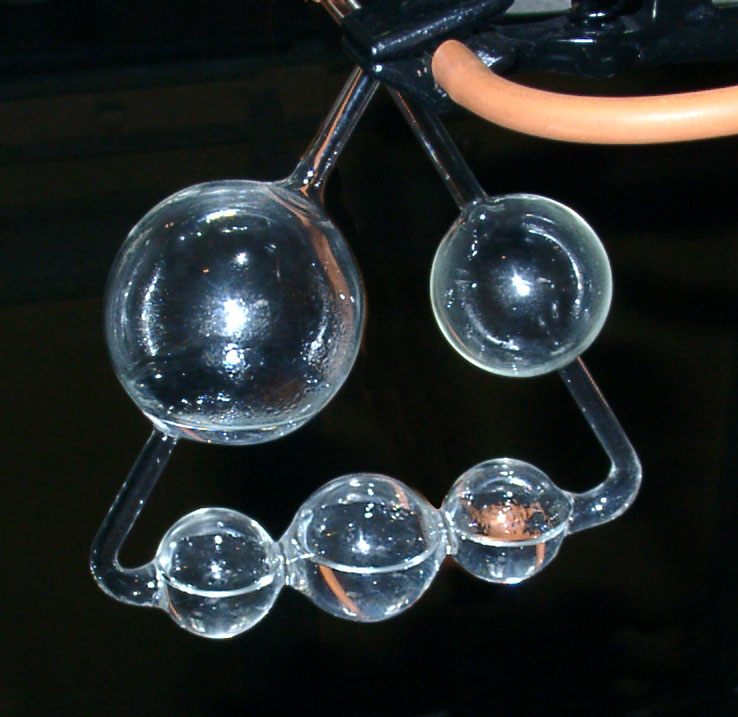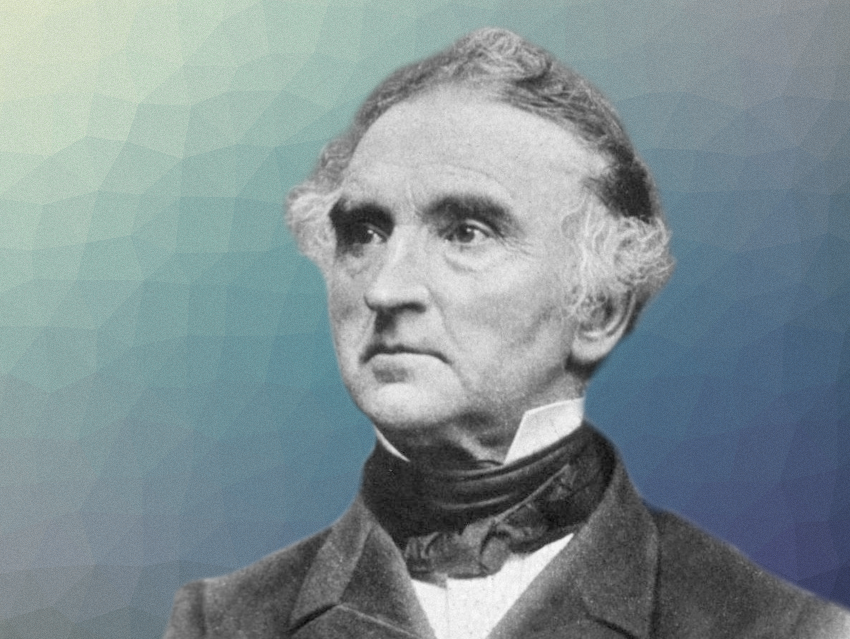Justus von Liebig (1803 – 1873) is a very well-known German scientist. He is considered one of the founders of organic chemistry and sometimes described as the “father of the fertilizer industry”. He developed important analytical methods, devised a manufacturing process for beef extracts, and founded the journal Justus Liebig’s Annalen der Chemie. In addition, he modernized chemistry education with systematic teaching methods, combining lectures and laboratory work, and is regarded as one of the great chemistry teachers. Many notable chemists were among his students.
1 Liebig’s Career
Justus Liebig was born on May 12, 1803, in Darmstadt, Germany [1]. He dropped out of school in 1818 and became an apothecary’s apprentice. In 1819, Liebig started to study chemistry in Bonn under Karl Wilhelm Gottlob Kastner, whom he followed to Erlangen (both in Germany). Liebig then received a government scholarship to study in Paris, France, where he moved in 1822. There, he was influenced, for example, by the work of Joseph-Louis Gay-Lussac. In 1823, Liebig received his doctorate from Kastner in Erlangen in absentia, based on just his written works and without a thesis defense.
Liebig returned to Germany and moved to Gießen, where he became Associate Professor in 1824 (based on a recommendation by Alexander von Humboldt) and Full Professor in 1825. In Gießen, he built the first chemical laboratory for experimental teaching. In 1938, Liebig received and declined a call to the University of St. Petersburg, Russia, and was able to negotiate that a wing be added to the Gießen laboratory. In 1845, Liebig received the title of “Freiherr” for his achievements from Louis II, Grand Duke of Hesse. In 1852, Liebig moved to Munich, Germany. This change had been initiated by Max Joseph Pettenkofer, who had worked with Liebig in Gießen in 1844 before moving to Munich himself. Justus Freiherr von Liebig passed away on April 18, 1873, in Munich.
2 Liebig’s Research
Liebig’s contributions to chemistry cover a truly impressive range of topics. They include, for example, the development of an apparatus for elemental analysis in organic chemistry (the “Kaliapparat”), the Liebig condenser for cooling used in distillations, a process for silvering used in mirror making, investigations of silver fulminate and mercury fulminate, the radical theory used to describe the structure of organic compounds, the discovery of chloroform, pioneering work on agrochemistry and modern mineral fertilizer, a method for producing beef extract as an inexpensive nutrition source, and the modernization of chemistry education.
2.1 Analytical Chemistry
In 1831, Liebig developed an apparatus for determining the carbon, hydrogen, and oxygen content of organic substances (i.e., elemental analysis) [2]. The substance in question first underwent combustion. The water vapor created during this process was absorbed using a tube of hygroscopic calcium chloride. The rest of the sample then entered Liebig’s device, called “Kaliapparat” (see Fig. 1), which contained five connected glass bulbs. The carbon dioxide produced during combustion was absorbed in a potassium hydroxide solution in the apparatus.
This approach allowed the determination of the weights of hydrogen and carbon in the sample by weighing the calcium chloride tube and the Kaliapparat before and after absorption. The remainder is then oxygen for any organic substance consisting only of these three elements.

Figure 1. Replica of a Kaliapparat; Terabyte, wikimedia.org, CC BY-SA 3.0.
2.2 Organic Chemistry
Liebig made a range of important contributions to organic chemistry. For example, he frequently collaborated with Friedrich Wöhler, who is well-known for the synthesis of the organic compound urea from inorganic substances. Liebig, Wöhler, and Auguste Laurent pioneered the so-called radical theory in the 1830s [3–5]. In this theory, which is used to describe the structure of organic compounds, fragments of organic compounds (“radicals”) are thought to combine to form organic compounds like inorganic elements combine to form inorganic compounds.
Liebig and Wöhler observed in 1832 [3] that benzaldehyde, benzyl alcohol, benzoyl chloride, and benzamide share a common C7H5O fragment. This fragment was considered a “radical of benzoic acid”. Laurent then reported the isolation of benzoyl in 1835 [4]. Today, it is thought that he isolated the corresponding dimer, i.e., dibenzoyl.
Liebig and Wöhler also observed isomerism for the first time. Liebig had prepared silver fulminate, and Wöhler had prepared silver cyanate. Both compounds have the same composition, but different properties—silver fulminate is highly explosive, silver cyanate is not. These results, among others, led Jöns Jakob Berzelius to recognize the phenomenon of isomerism [6].
In 1831, Liebig discovered chloroform, which he called “Chlorkohlenstoff” (carbon chloride), independently of other researchers [7]. He obtained chloroform via an alkaline cleavage of chloral, or trichloroacetaldehyde. He also published on a wide variety of other topics in organic chemistry.
2.3 Agrochemistry and Food Chemistry
As a boy, Liebig had lived through the “Year Without a Summer” (1816), where summer temperatures in Europe decreased significantly below average. This caused major food shortages. It is thought that this famine influenced Liebig’s later work. In the 1840s, he attempted to use chemistry to improve agricultural practices and, thus, improve food availability.
Liebig published the seminal book “Die organische Chemie in ihrer Anwendung auf Agricultur und Physiologie” (Organic Chemistry in its Application to Agriculture and Physiology) in 1840 [8]. It covered plant nutrition, among other topics. He identified nitrogen, phosphorus, and potassium as essential to plant growth and argued that nitrogen-based fertilizer was needed to optimize the growth of crops.
Liebig also popularized a theory first developed by Carl Sprengel, the “law of the minimum”. This principle states that growth is limited by the scarcest resource, i.e., plant growth can only be improved by raising the amount of the limiting, scarcest nutrient, not by adding more of already abundant ones.
He also worked on food chemistry and a theory of nutrition. Liebig argued that consuming meat juices is important. He developed a formula for producing concentrated beef extract, aiming to create an inexpensive nutrition source, and published the details of the process. This ultimately led to the foundation of the Liebig’s Extract of Meat Company in London, UK, in 1865, initiated by George Christian Giebert. The company aimed to produce meat extract cheaply in South America from meat that was a byproduct of the local leather industry and then export it to Europe. The nutritional value of the extract was later called into question, and the company promoted it as a convenient source of flavor instead [9].
3 Liebig’s Impact on Chemical Education
When Liebig first started to teach chemistry in Gießen, the chemistry faculty still had a rather low standing and he had to get by with a small salary and only small allowances for equipment and chemicals. He paid out of his own pocket for some of the necessary materials for teaching. His teaching methods, however, were popular with the students, who showed great interest. Part-time, Liebig also ran a private institute from 1827 to 1833, teaching pharmacy and technical trades to improve his financial situation. The university first rejected including this more “practical” education under its umbrella. In 1833, Liebig was able to convince the university’s chancellor to integrate the institute within the university.
Liebig introduced a structured system for teaching chemistry, bringing about a new era in chemical education. His program combined laboratory work with relevant lectures and regular examinations, before finally allowing students to perform research together with the professor. The course started with qualitative inorganic analysis, which is still a mainstay at the start of many chemistry programs today. Liebig’s laboratory became renowned as a model institution for teaching practical chemistry.
Starting in 1841, Liebig also wrote popular science articles named “Chemische Briefe” (chemical letters) for the newspaper Augsburger Allgemeine Zeitung, aiming to make chemistry accessible to a larger audience [10].
Liebig became known far beyond Germany, and both German students and many from abroad came to Gießen to learn from him. Among his famous students were, for example, August Wilhelm von Hofmann (co-founder and first President of the German Chemical Society), August Kekulé (one of the fathers of chemical structure theory), Hermann von Fehling (known for the development of Fehling’s solution), and Joseph von Scherer (co-founder of the field of clinical chemistry), among many others [11].
References
[1] Liebig, Justus Freiherr von, in Neue Deutsche Biographie 1985, 14, 497–501.
[2] J. Liebig, Ueber einen neuen Apparat zur Analyse organischer Körper, und über die Zusammensetzung einiger organischen Substanzen, Ann. Phys. Chem. 1831, 97, 1–43. https://doi.org/10.1002/andp.18310970102
[3] J. Liebig, F. Wöhler, Untersuchungen über das Radikal der Benzoesäure, Ann. Pharm. 1832, 3, 249–282. https://doi.org/10.1002/jlac.18320030302
[4] A. Laurent, Sur le Benzoïle et la Benzimide, Ann. Chim. 1835, 59, 397–423.
[5] J. Liebig, Ueber Laurent’s Theorie der organischen Verbindungen, Ann. Pharm. 1838, 25, 1–31. https://doi.org/10.1002/jlac.18380250102
[6] S. Esteban, Liebig–Wöhler Controversy and the Concept of Isomerism, J. Chem. Educ. 2008, 85, 1201. https://doi.org/10.1021/ed085p1201
[7] J. Liebig, Ueber die Verbindungen, welche durch die Einwirkung des Chlors auf Alkohol, Aether, ölbildendes Gas und Essiggeist entstehen, Ann. Pharm. 1832, 1, 182–230. https://doi.org/10.1002/jlac.18320010203
[8] J. Liebig, Die organische Chemie in ihrer Anwendung auf Agricultur und Physiologie, Friedrich Vieweg und Sohn, Braunschweig, 1840.
[9] C. Cansler, Where’s the Beef?, www.sciencehistory.org, December 13, 2013. (accessed April 29, 2023)
[10] Chemische Briefe, www.liebig-museum.de. (accessed April 29, 2023)
[11] Justus von Liebig, academictree.org. (accessed April 29, 2023)
Also of Interest
 |
Spotlight: Fire Destroys Historical Auditorium of the Liebig Laboratory |
 |
Spotlight: 24 Must-See Destinations in Europe for Chemists |
 |
Historical Landmark Status to Justus Liebig Laboratory |




